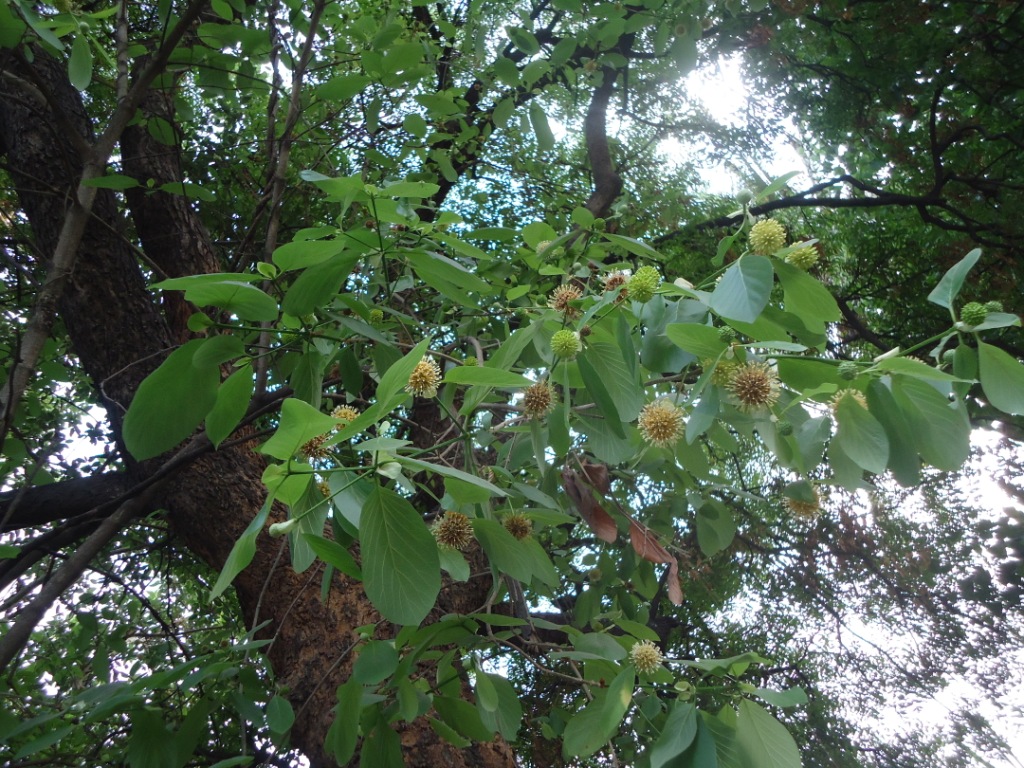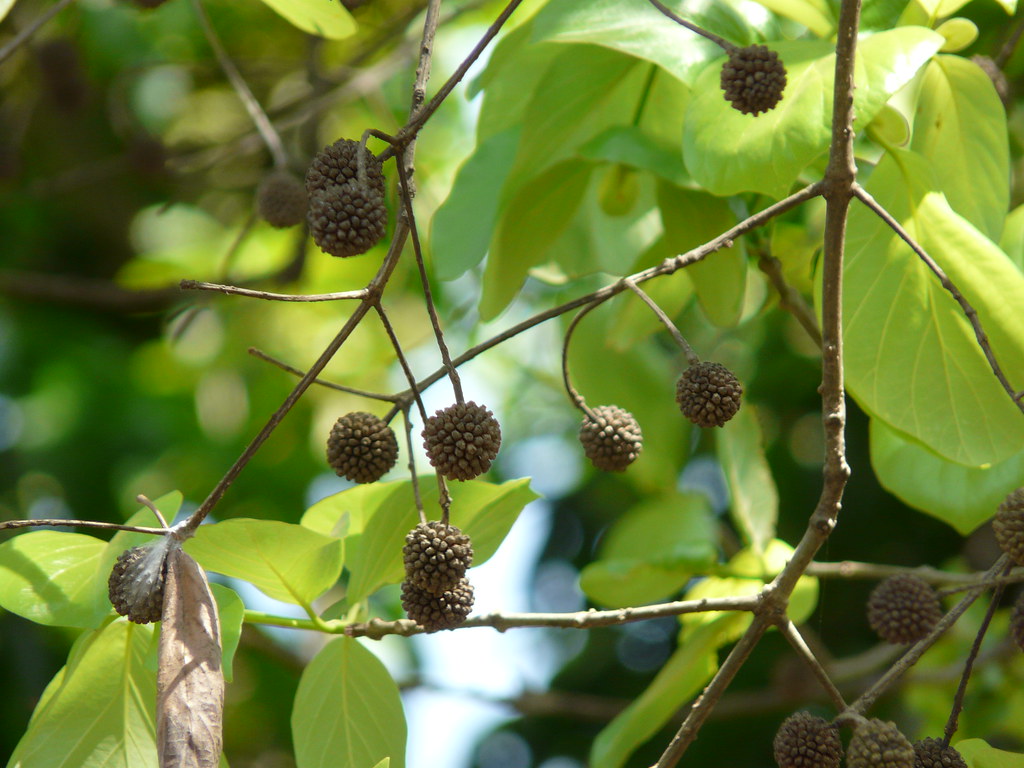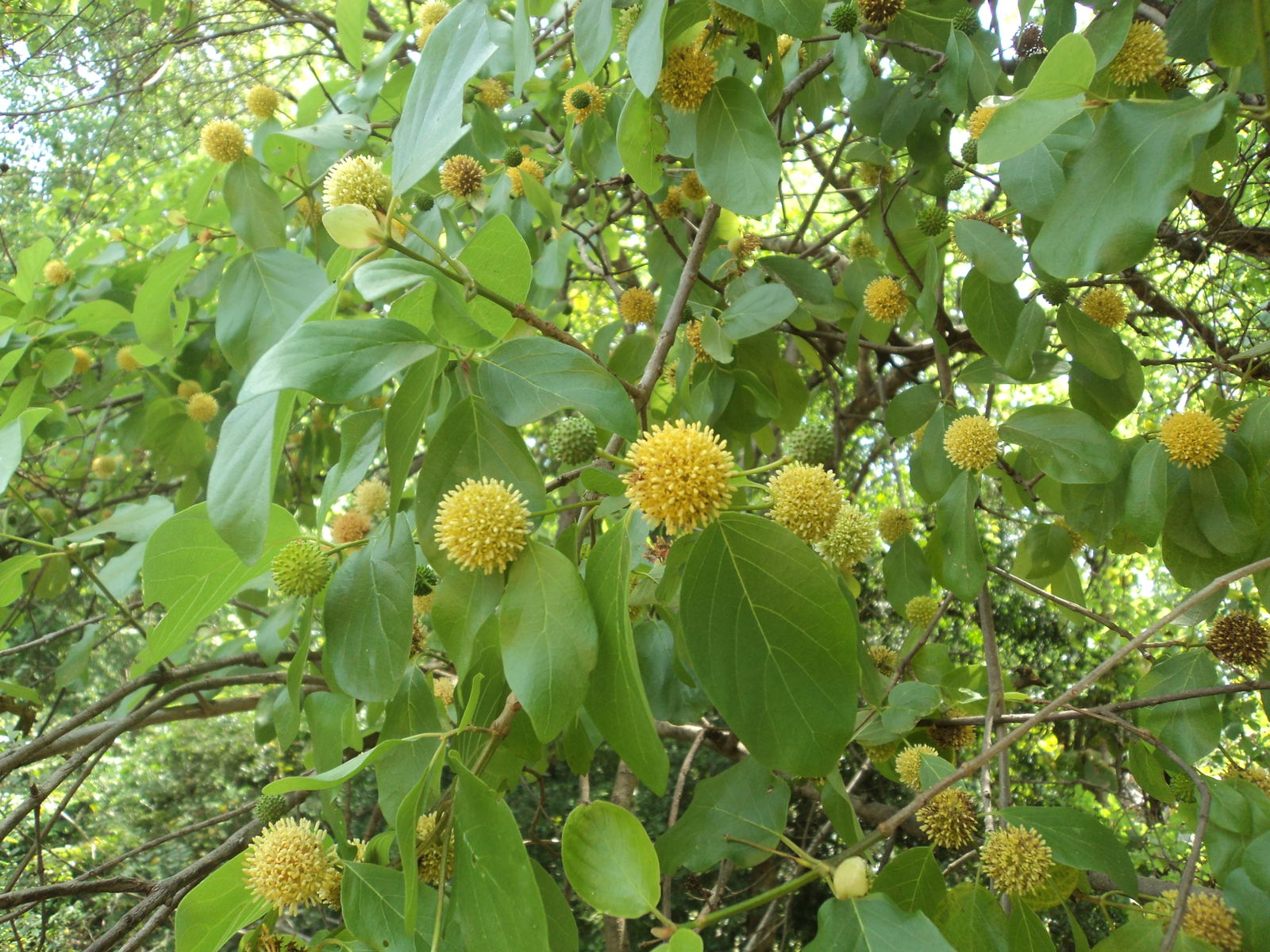Kaim tree
common name :- Kaim, Kalam, Mundi
scientific name :- Mitragyna parviflolia
family :- Rubiaceae
Description :-
Size and Growth: Mitragyna parvifolia ( kaim ) is a medium-sized deciduous tree that can grow up to about 15-25 meters (50-80 feet) in height. The trunk is straight and cylindrical, with a grayish-brown bark that becomes rough and fissured with age.
Leaves: The leaves of Mitragyna parvifolia are opposite, simple, and oval to lanceolate in shape. They are dark green and glossy on the upper surface, while the underside is paler. The leaves are arranged in pairs along the branches.
Flowers: The tree produces small, fragrant white or pale yellow flowers that are arranged in clusters at the ends of branches. The flowers are typically tubular and have a star-like appearance when fully open.
Fruits: The fruit of kaim is a small, round to oblong capsule that turns brown as it matures. Each capsule contains multiple small seeds.
Habitat: Mitragyna parvifolia is often found in lowland tropical rainforests, as well as in mixed dipterocarp forests. It prefers well-drained soils and can tolerate a range of soil types.
Traditional Uses: In traditional herbal medicine, certain parts of the kaim tree, including the leaves, bark, and roots, are used for their potential medicinal properties. They are sometimes used to treat various ailments and conditions.
Alkaloids: Similar to its close relative Mitragyna speciosa (commonly known as kratom), Mitragyna parvifolia also contains alkaloids. However, the alkaloid composition and concentrations in Mitragyna parvifolia may differ from those in Mitragyna speciosa.



